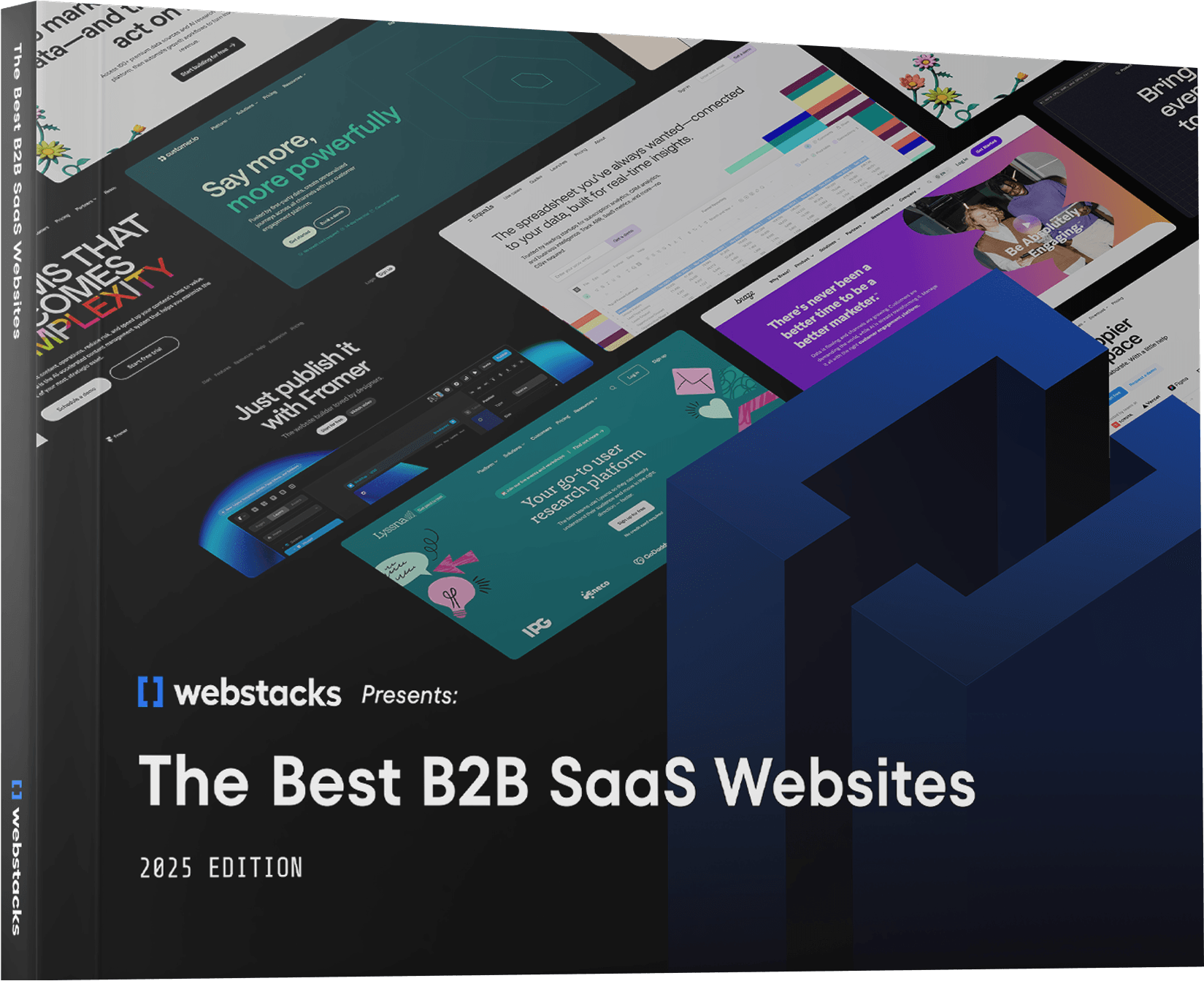eBooks have emerged as indispensable assets in B2B marketing, driving effective campaigns, generating leads, and establishing industry authority. In today's competitive landscape, they are more than just informational resources—they’re powerful tools that can elevate your brand and engage your audience.
According to HubSpot, 55% of marketers say eBooks are a top lead-generation tool, highlighting their value in attracting prospects.
In brief:
- eBooks are essential for lead generation and establishing thought leadership in B2B marketing.
- Effective eBooks require compelling design, clear structure, and brand consistency.
- Drawing inspiration from top B2B examples can enhance your eBook strategy and design.
Why Create eBooks For Your B2B Business?
Here are some of the top reasons why your B2B organization should incorporate eBooks into their content marketing strategy:
1. In-Depth Knowledge Sharing:
Ebooks allow B2B companies to share in-depth industry knowledge and insights. By delving into complex topics, they demonstrate expertise and provide valuable information to businesses hungry for in-depth understanding. In an era where decision-makers are looking for substantial resources to inform their choices, ebooks become valuable assets, positioning the company as a reliable source of information.
2. Lead Generation and Qualification:
One of the primary functions of ebooks in B2B marketing is lead generation. By offering high-quality, informative content, businesses can attract potential clients, encouraging them to exchange their contact information for the ebook. These leads, acquired through genuine interest in the content, are often of higher quality, making them more likely to convert into customers.
3. Building Credibility and Trust:
B2B transactions are built on trust. Ebooks, when well-researched and thoughtfully crafted, enhance the credibility of a business. By providing accurate and valuable information, companies establish trust with their audience, a critical element in decision-making processes. Trust leads to long-term relationships, ensuring that clients return for future services or products.
4. Thought Leadership and Brand Authority:
Ebooks present an opportunity for B2B companies to position themselves as thought leaders. By addressing industry challenges, sharing innovative solutions, and offering expert insights, businesses can shape perceptions within their market. When a company is perceived as a thought leader, it becomes a go-to resource, attracting clients who value cutting-edge ideas and expertise.
5. Engagement and Relationship Building:
Ebooks are interactive tools that encourage engagement. By integrating multimedia elements, interactive charts, and visually appealing design, businesses can create an immersive reading experience. Engaged readers are more likely to connect emotionally with the brand, fostering a relationship that goes beyond the transactional level.
6. Multi-Channel Marketing:
Ebooks serve as versatile content pieces that can be repurposed across various marketing channels. From email campaigns to social media promotions, these assets can be adapted, ensuring consistent messaging and wider reach. Through strategic distribution, businesses can amplify their ebook’s impact, reaching a broader audience of potential clients.

Establishing Thought Leadership through B2B eBooks
Creating eBooks allows your company to showcase its expertise and position itself as an industry leader. By providing valuable insights, addressing key industry challenges, and offering innovative solutions, your eBooks can demonstrate your deep understanding and expertise.
Incorporating in-depth content such as industry research, case studies, and expert opinions addresses the specific challenges of your target audience. This not only educates your readers but also builds credibility and trust. Moreover, using professional design and unique formats captures attention and reinforces your brand's authority.
Consider eBooks as essential tools within your content marketing strategy. They can serve as educational resources, providing value through best practices and real-world examples, thereby nurturing prospects through the sales funnel.
B2B eBook Design Checklist
Compelling Cover Design
- Covers can make or break your entire eBook. Many users may skip right over your offering if the cover does not utilize bold colors, striking visuals, and compelling imagery.
- Ensure the cover visually conveys the essence of your eBook, aligning with the content’s core message and value proposition.
- Include trust signals; logos, accolades, certifications, partnerships, publish date - any credibility to establish yourself as a reliable source.
Clear Information Architecture
- Structure your eBook with clear headings, subheadings, and chapters, ensuring logical flow and making it easy for readers to navigate the material.
- Create a user-friendly table of contents that provides a comprehensive overview of the eBook's sections, enabling readers to swiftly jump to relevant topics.
Visually Appealing Graphics
- Design illustrations that represent concepts uniquely, adding a touch of creativity that captures the reader's attention and enhances the overall visual appeal.
- Use charts, tables, graphs, and diagrams to illustrate complex data points, making the information more accessible and engaging for readers.
Want to learn more about illustrations? Check out our guide on the Best SaaS Illustrations!
Content Formatting and Readability
- Use concise paragraphs, bullet points, and visuals to enhance scannability. It’s highly likely that most people will not read cover to cover, so make sure the key points are easily digestible.
- Use ample white space, consistent margins, and readable font styles to create visually appealing layouts, preventing reader fatigue.
Brand Consistency
- Develop comprehensive brand guidelines encompassing colors, typography, imagery, and tone of voice to ensure a consistent visual and verbal identity across your eBooks.
- Place the company logo and other branding assets throughout pages, reinforcing brand recall and emphasizing your organization’s core competencies.
Top B2B eBook Examples
Here, we identify 10 B2B companies that consistently publish exceptionally designed eBooks, reports, whitepapers, and other similar digital resources. Check out our examples and the highlighted design elements from each!
Semrush

Best Features From Semrush
- 🌈 Colorful Backgrounds
- 🖋️ Alluring Heading Typography
- ↕️ Paragraph Spacing
Shopify

Best Features From Shopify
- 🌈 Use of Captivating Gradients
- 📊 Data Visualization
- 🖊️ Bold Headings
Hubspot

Best Features From Hubspot
- 📙 Superb eBook Cover Design
- 🎤 Brand Consistency (Colors, Tone of Voice, Images)
- 📍 Branding in the Footer, CTAs, and Illustrations
Calendly

Best Features From Calendly
- ✏️ Eye-catching Illustrations
- 📃 Bullet Points, Block Quotes, and Other Unique Formatting
- 🔵 Visual Identity Consistency (Colors, Typography, Imagery)
Shogun

Best Features From Shogun
- 💻 Screenshots with Overlays and Illustrations
- 👆 Links to Relevant Shops and Content
- 📞 Conversion Panels
Hotjar

Best Features From Hotjar
- 👀 Intuitive and Scannable Content Structure
- 📘 Visually Pleasing Chapter Covers
- 🖌️ Subtle Use of Pastel Colors
Pantheon

Best Features From Pantheon
- 📈 Data Visualization
- 🟡 Color Palette
- 📰 Title Typography
ServiceTitan

Best Features From ServiceTitan
- 🔢 Supporting Statistics
- 🧍 People and Industry-related Illustrations
- 📏 Content Length and Minimizing of White Space
Zendesk

Best Features From Zendesk
- 📸 Captivating Imagery
- 📖 Presentation of Customer Stories
- ✅ Solution-oriented Copywriting
Databricks

Best Features From Databricks
- 📋 Table of Contents and Pagination
- 🎨 Use of Brand Colors for Copy and Backgrounds
- ⤵️ Compelling Conversion Panels
Our Take on B2B eBooks
At Webstacks, we believe that a well-crafted eBook is more than just a marketing asset—it's a representation of your brand's expertise and value proposition. As web design experts, we emphasize the importance of integrating exceptional design with insightful content.
A professionally designed eBook not only captures attention but also enhances the reader's experience, making complex information accessible and engaging. From intuitive layouts to compelling visuals, every design element should serve to reinforce your message and brand identity.
Moreover, aligning your eBook with your overall digital strategy amplifies its impact. Incorporating SEO best practices, integrating interactive elements, and ensuring mobile responsiveness are key factors we consider essential in today's digital environment.
By combining strategic content with exceptional design, you can create eBooks that not only educate but also inspire action, driving growth and establishing your brand as a leader in your industry.
Parting Thoughts
In summary, eBooks are not just documents; they are strategic tools that empower B2B companies to educate, engage, and convert potential clients. For marketers, these digital assets are invaluable in establishing credibility, generating leads, and nurturing long-term, fruitful relationships.
eBooks don’t have to be boring and bland. They shouldn’t remind you of a textbook or dissertation. Instead, eBooks should be inspiring, captivating pieces of content that properly represent your brand and the core competencies of your organization. There is plenty more to a whitepaper than words on a page. Utilize design best practices to enhance the appearance of your content, and hone your brand voice and industry expertise to make the asset your very own.

B2B eBook FAQs
What is the average length of a B2B eBook?
The ideal length of a B2B eBook can vary widely based on your content, audience, and purpose. However, a typical B2B eBook often falls within the range of 10 to 30 pages. The key is to strike a balance between providing comprehensive information and keeping the content concise and engaging.
Focus on delivering high-quality, actionable content that directly addresses your audience's pain points and offers valuable insights. Visual elements, such as infographics, charts, and images, should be used strategically to enhance understanding and engagement without overwhelming the reader.
What are the best platforms and channels for distributing B2B ebooks to maximize visibility and downloads?
When it comes to marketing your B2B eBooks, there are a number of strategies that can be highly effective when executed properly. Here are just a few:
Your Website: Hosting the eBook on your website allows you to control the user experience and capture leads directly. Create a dedicated landing page with a compelling description, visuals, and a clear call-to-action (CTA) to encourage downloads. You can also construct a content strategy, publishing blogs and other relevant content that lead to downloading the eBook.
Social Media: Leverage social media platforms like LinkedIn, Twitter, and Facebook to share snippets, quotes, and visuals from your eBook. Engage with relevant communities and groups where your target audience congregates.
Email Marketing: Send targeted email campaigns to your subscribers, including a teaser and a direct download link. Personalize your emails based on your recipients' interests and pain points.
Should I gate my ebook behind a form?
There are both advantages and disadvantages to gating an eBook. Here are some things to consider when requiring a user to submit a form in order to access an eBook:
Partial Access: Offer a portion of the eBook (like the introduction or a few chapters) for free, showcasing the value. To access the full eBook, users can fill out a form. This way, readers can gauge the content's quality before providing their information.
Quality Over Quantity: Focus on the quality of leads over quantity. Ask for essential information like name, email, and company size. Too many form fields can deter potential readers.
Follow Up: After leads are generated, follow up promptly with personalized emails. Provide additional valuable content and nurture the relationship. This enhances the reader's experience and builds trust.
Feedback Loop: Use the data gathered from forms to understand your audience better. There are several tools like Hotjar and Fullstory which help analyze conversion rates, examine user interactivity, and see percent of visitors are bouncing before completing a form. You should also conduct A/B testing to test variations of landing pages.





